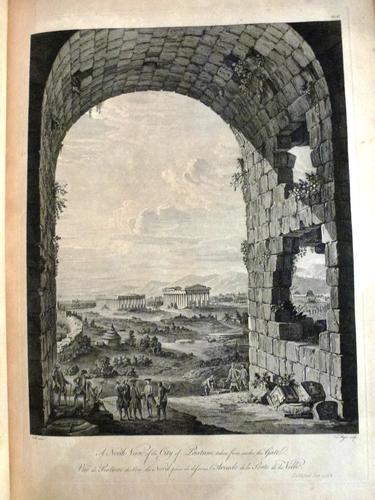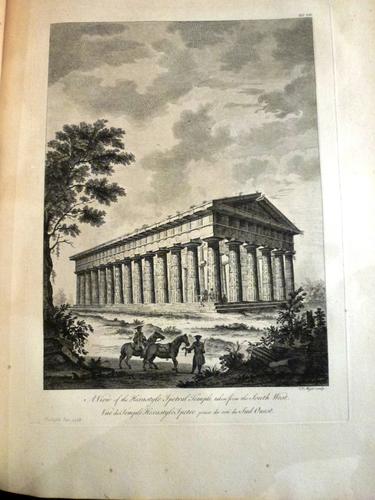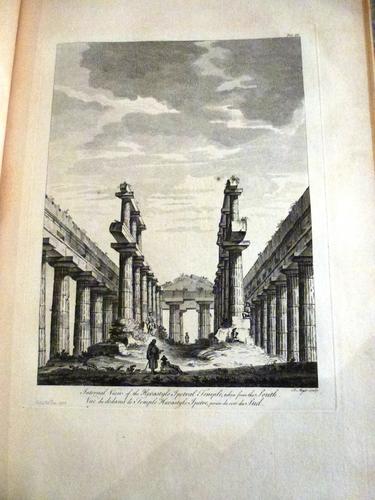Thomas Major (1714/20-1799)
The Ruins of Paestum, otherwise Posidonia, in Magna Graecia / by Thomas Major. 1768
54.0 x 2.5 cm (book measurement (inventory)) | RCIN 1071092

Thomas Major (1714/20-1799)
The Ruins of Paestum, otherwise Posidonia, in Magna Graecia / by Thomas Major 1768

Thomas Major (1714/20-1799)
The Ruins of Paestum, otherwise Posidonia, in Magna Graecia / by Thomas Major 1768



-
Born in Buckinghamshire around 1720, Thomas Major started his career in Paris under the tutorship of the French engraver Jacques-Philippe le Bas in 1745. In October the following year, he was imprisoned in the Bastille in retaliation for the temporary imprisonment of French and Irish soldiers by English forces following the Battle of Culloden. Major was only released after the intercession of the Marquis d'Argenson, the French Foreign Minister. Following his return to London around 1747, Major became engraver to Frederick, Prince of Wales, and later came under the patronage of the Duke of Cumberland, eventually becoming chief seal engraver to George II around 1758.
Whilst under the patronage of the Duke of Cumberland, Major engraved works on the archaeological sites at Palmyra and Baalbek as well as publishing a catalogue of engraved portraits in 1754. In 1760, he was dismissed from his post as chief seal engraver but was reappointed in 1768. In the same year he published The Ruins of Paestum or Posidonia, a collection of engravings made from drawings done on site in 1767.
Due to its proximity to Naples, Paestum (Poseidonia) in the eighteenth century was a popular excursion for Grand Tourists visiting the city, particularly due to the efforts of the philhellene Sir William Hamilton, the British Ambassador to Naples. The well preserved Greek temples, mistaken for Roman Basilicas, were often drawn, painted and engraved by artists both to serve as souvenirs and to provide classical examples for architects to emulate.
It is probable that the book was acquired by George III for this very purpose as the King held a particular interest in the development of the neoclassical style in British architecture and made numerous drawings of classically inspired buildings. The book, bound in calf, bears the arms of George III surrounded by the chain of the Order of the Garter and two smaller emblems for the Orders of the Thistle and St Patrick.Provenance
From the library of George III at Windsor
-
Creator(s)
(contributor)(publisher)(printer) -
Measurements
54.0 x 2.5 cm (book measurement (inventory))
Other number(s)
ESTC : English Short Title Catalogue Citation Number – ESTC T100079







